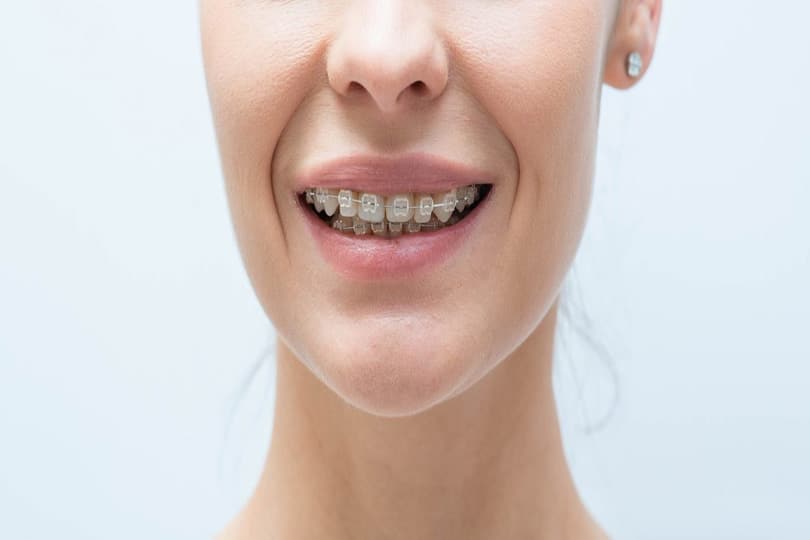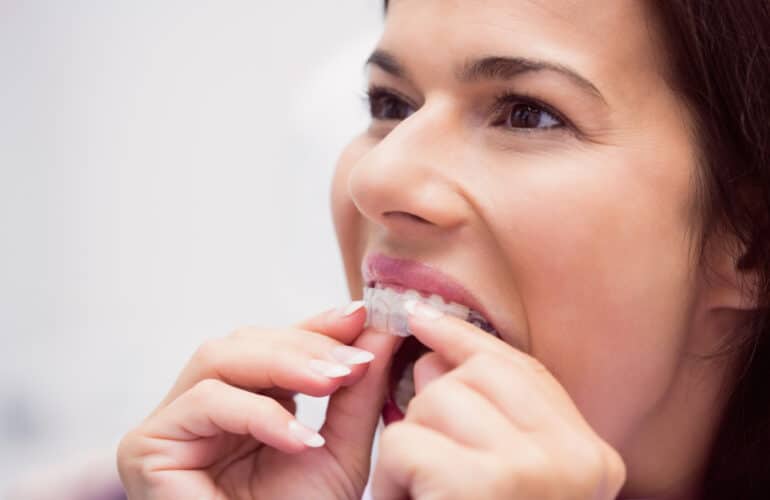Did you know that when your upper front teeth cover more than 30 to 40% of your lower front teeth this is known as a deep bite? In orthodontics, this is also called an overbite if your top teeth cover your bottom teeth. A deep bite malocclusion can lead to orthodontic issues and necessitate serious dental work down the line if left untreated. A bad bite should be addressed as early as possible to ensure as easy of a smile as possible.
Table of Contents
Causes of Deep Bite
But let’s start with the deep bite cause: why does this misalignment happen? Genetics are a big factor, the size of your jaw and the shape of your teeth can significantly contribute to this.
The developmental factors are also a contributing factor to the misalignment of the teeth. In early childhood, prolonged thumb sucking or pacifier use can lead to a deep bite. These habits impact jaw development, the constant pressure from sucking can cause the upper teeth to move forward over the lower teeth. Another bad habit, obsessive nail biting, can lead to excessive overbite as well.
And what does a deep bite look like? The visual impact is a misalignment and crowded teeth. But beyond the impact on your bite, the physical pain in your upper jaw or lower jaw and the discomfort in the jaw joint are also significant. There are also signs of tooth wear, excessive wear, and gum recession that your dentist can identify.
More invisible to the naked eye but equally essential to be aware of are the health concerns related to damage to tooth structure, tooth enamel, and gum tissue over time. The fact that your upper front teeth excessively overlap with your lower teeth leads to increased wear and tear and damage over the years. This can indirectly increase the risk of tooth decay, as misalignment can make it harder to follow proper oral hygiene and maintain dental health.
Treatment Options Overview
To determine the best treatment options for deep bite correction, it’s essential to go on a case by case basis, as a range of effective treatment options are available. Most common is the use of orthodontic appliances.
For young children, braces are often the preferred choice. For older children or adults, clear aligners (such as Invisalign) are a suitable, more discreet, alternative. If you are using braces or clear aligners, it is essential to follow dental care instructions closely to maintain proper oral hygiene. Protecting tooth structure and gum tissue is crucial, and preventing future orthodontic issues is paramount. In either case, early intervention is crucial to ensure that jaw alignment can be improved and deep bite treatment can be achieved without the need for surgical intervention.
Unfortunately, if early intervention is not effective or in more severe cases (especially with adults whose jaw bones are no longer growing), orthognathic surgery (also known as jaw surgery) may be necessary. This requires repositioning the jaw bones to correct the deep bite.
Conclusion
Deep bites, in addition to their visual impact, can cause significant issues ranging from jaw pain to tooth wear. It is crucial to identify the most effective treatment approach and to continue preventing long-term orthodontic issues and associated health problems. If you are concerned with any jaw pain or “overbite,” reach out to us today for an initial consultation to address any dental issues. We are happy to help.




